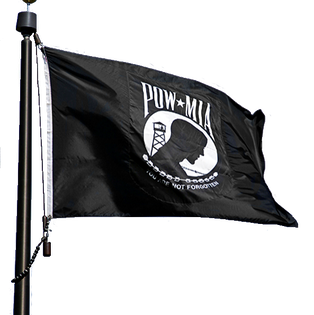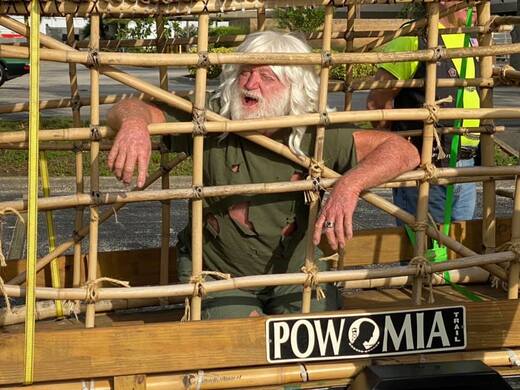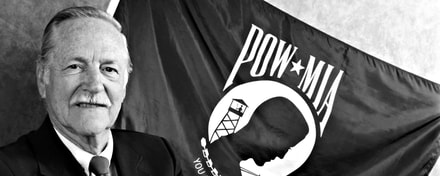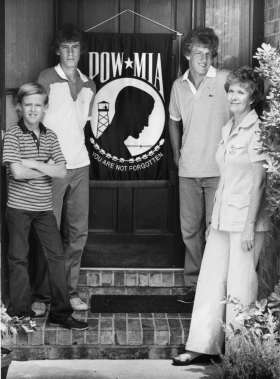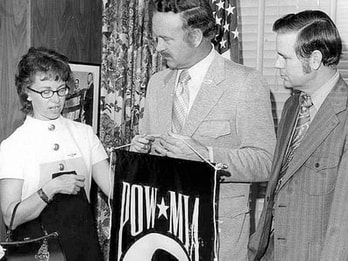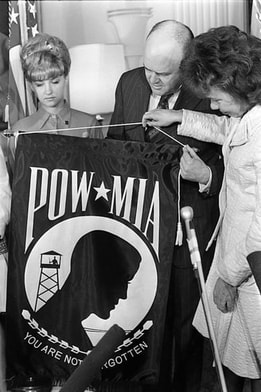You see it everywhere... the stark, black-and-white POW*MIA flag flying in front of VA hospitals, post offices and other federal, state and local government buildings, businesses and homes. It flaps on motorcycles, cars and pickup trucks. The flag has become an icon of American culture, a representation of the nation’s concern for military service personnel missing and unaccounted for in overseas wars.
From the American Revolution to the Korean War, thousands of U.S. soldiers, Marines, airmen and sailors have been taken prisoner or gone missing. But it took the Vietnam War and a sense of abandonment felt by wives and family members of Americans held captive, to bring forth what has evolved into the nation’s POW*MIA symbol.
The POW*MIA flag is inextricably tied to the National League of POW*MIA Families, which was born in June 1969 as the National League of Families of American Prisoners in Southeast Asia. Its mission was to spread awareness of the mistreatment of prisoners of war at the hands of their captors. It was the brainchild of Karen Butler, wife of Navy pilot Phillip Butler, who had been shot down over North Vietnam in April 1965, and Sybil Stockdale, whose husband, Navy Commander James Bond Stockdale, was the highest-ranking POW in North Vietnam. Stockdale had been held prisoner since September 1965, when his A-4 Skyhawk went down over North Vietnam.
One day in 1971, League member Mary Hoff read a story in the Jacksonville Times-Union about Annin & Co., the flag maker who had refused to produce flags for the Chinese communists to display at the United Nations. She came up with the idea of creating a flag as the group’s symbol. Her husband, Navy pilot Lt. Cmdr. Michael Hoff, had been missing in action since January 7, 1970. Hoff then reached out to the country’s oldest and largest flag maker, Annin Flag makers of Verona, N.J.
The POW*MIA flag is inextricably tied to the National League of POW*MIA Families, which was born in June 1969 as the National League of Families of American Prisoners in Southeast Asia. Its mission was to spread awareness of the mistreatment of prisoners of war at the hands of their captors. It was the brainchild of Karen Butler, wife of Navy pilot Phillip Butler, who had been shot down over North Vietnam in April 1965, and Sybil Stockdale, whose husband, Navy Commander James Bond Stockdale, was the highest-ranking POW in North Vietnam. Stockdale had been held prisoner since September 1965, when his A-4 Skyhawk went down over North Vietnam.
One day in 1971, League member Mary Hoff read a story in the Jacksonville Times-Union about Annin & Co., the flag maker who had refused to produce flags for the Chinese communists to display at the United Nations. She came up with the idea of creating a flag as the group’s symbol. Her husband, Navy pilot Lt. Cmdr. Michael Hoff, had been missing in action since January 7, 1970. Hoff then reached out to the country’s oldest and largest flag maker, Annin Flag makers of Verona, N.J.
